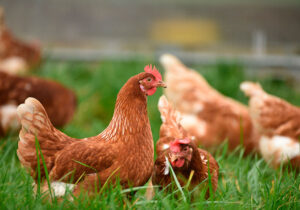
Cold Stress and Onset of Ascites in Broilers
- زمان تقریبی مطالعه: 4 دقیقه

Pulmonary Hypertension Syndrome (PHS or Ascites) is a major cause of mortality and disease prevalence in modern broiler production. It is believed that genetics, environment, and management all contribute to triggering the cascade of events that culminate in ascites syndrome.
Generally, it has been proposed that the high metabolic rate of modern broiler lines increases oxygen demand, especially under cold environmental conditions or when birds are fed nutrient-dense diets. In such scenarios, the cardiopulmonary system in these birds is relatively underdeveloped and cannot meet the elevated oxygen demands, leading to hypoxemia (low blood oxygen levels).
High hematocrit levels and vascular constriction are consequences of hypoxemia, resulting in increased blood viscosity and reduced oxygen saturation. Consequently, the right ventricle of the heart must contract more forcefully to compensate for oxygen deficiency and overcome increased venous return, which may lead to pulmonary hypertension and ultimately right-sided heart failure.
Nutritional Control of Ascites
The use of varying nutrient levels in poultry diets remains a significant area of research, as it directly affects the incidence of ascites. Lipid peroxidation may contribute to cardiac tissue damage, increasing the risk of PHS. Therefore, the potential role of antioxidant nutrients has been widely investigated.
A combination of 250 IU vitamin E and 0.3 ppm selenium yeast significantly reduced mortality due to PHS and improved the gain-to-feed ratio in broilers exposed to cold stress (Roch et al., 2000). The observed benefits, including cellular integrity, are attributed to the antioxidant effects of these nutrients.
Supplementing 500 mg of vitamin C per kg of diet reduced the number of thick-walled pulmonary vessels (TWPVs) and the incidence of ascites (Xiang et al., 2002). However, body weight gain, cell volume, and feed efficiency were not significantly affected (Table 1).
It has also been suggested that vitamin C may help mitigate ascites by scavenging oxygen-derived free radicals (Ladmakhi et al., 1997). Table 1 shows that vitamin C supplementation significantly decreased pulmonary vessel thickness and the number of TWPVs, which may lower vascular resistance observed in broiler pulmonary arteries.
Role of Flaxseed Oil
Administering 50 g/kg flaxseed oil in diets of broilers raised under low-pressure conditions reduced right ventricular thickness, hematocrit, and hemoglobin concentration, while improving erythrocyte deformability and reducing blood viscosity (Walton et al., 1999; Table 2).
Flaxseed oil increased unsaturated fatty acids in erythrocyte membranes, thereby enhancing membrane fluidity and cell deformability (lower filtration index; Table 2). Rich in alpha-linolenic acid, flaxseed oil serves as a precursor to EPA (20:5 n-3) and DHA (22:6 n-3). These compounds can be metabolized into prostacyclins (PGI2, PGI3), which act as vasodilators. A higher n-3/n-6 fatty acid ratio in the diet may increase production of vasodilatory compounds and reduce vascular resistance (Walton et al., 1999).
Another study evaluating flaxseed oil and antioxidants under cold conditions found that although differences were not statistically significant, broilers fed 50 g/kg flaxseed oil showed reduced ascites incidence and a lower right ventricle to total ventricle (RV:TV) ratio compared to the control group (Walton et al., 2001).
Other Nutritional Interventions
Evidence suggests that including 1000 mg potassium carbonate per liter of drinking water can enhance blood oxygenation (PaO2) in broilers and may serve as a practical preventive strategy to reduce ascites-related mortality (Shlosberg et al., 1998). Similarly, birds fed diets high in bicarbonate and low in chloride exhibited lower pulmonary arterial pressure and heart weight, suggesting this as a potential method to mitigate PHS and ascites (Squires & Julian, 2001).
Adding 1% sodium bicarbonate to broiler diets also reduced ascites-related mortality. This reduction is attributed to the alkaline nature of bicarbonate and its potential to induce metabolic alkalosis (Owen et al., 1994). In general, alkalosis-inducing treatments may help reduce ascites incidence, whereas acidifying interventions could exacerbate the condition.
Supplementation with 1% L-arginine significantly reduced the RV:TV ratio and overall ascites-related mortality (Wideman et al., 1995). L-arginine is a precursor of nitric oxide, a potent pulmonary vasodilator, and may be required at levels higher than those necessary for maximal growth to achieve its protective effects.


